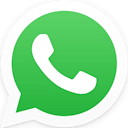How To Choose the Best Pricing Strategy for Your Application?
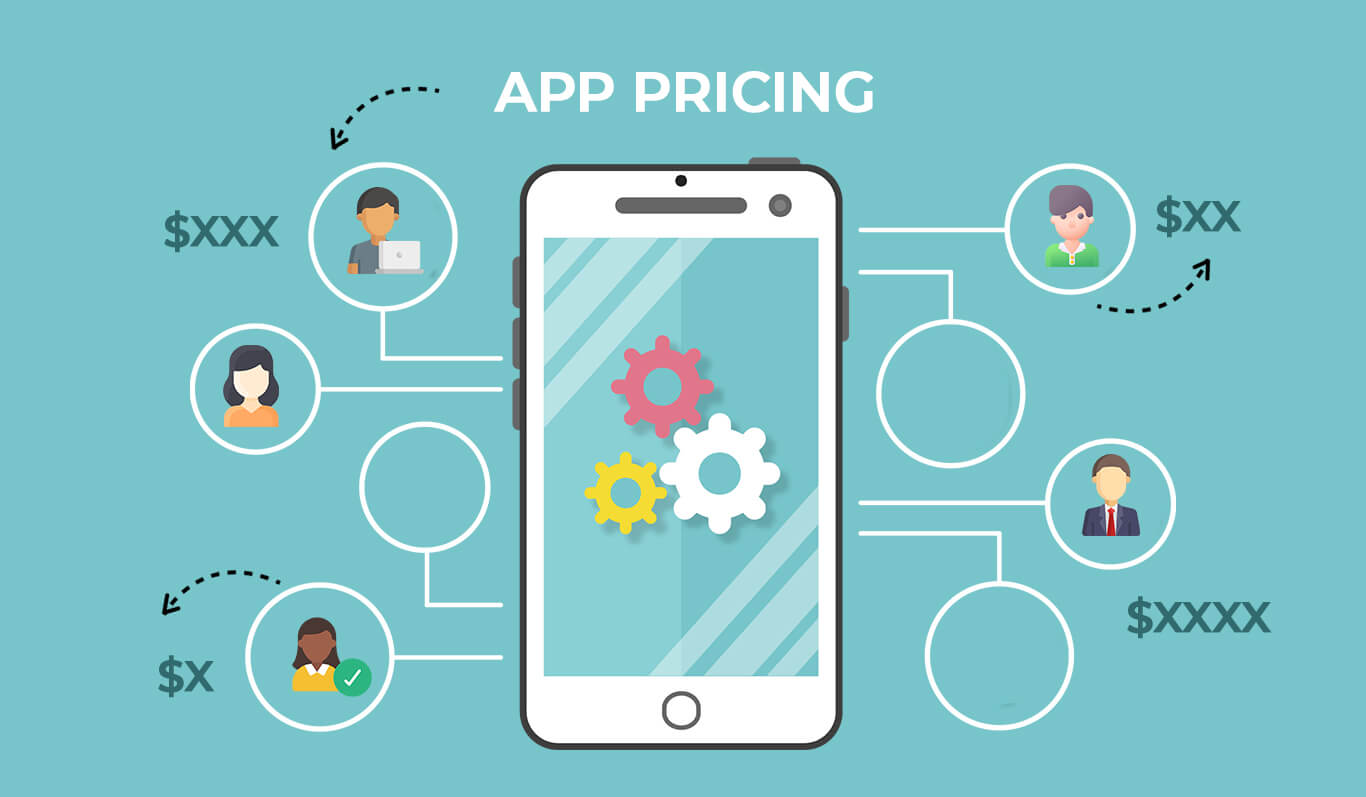
The app's pricing strategy is how businesses generate income, value, and popularity of the app. Choosing the right app pricing strategy will help to increase your app visibility and increase traction. However, it isn't as straightforward or without complication as it may seem to price your app. There are various factors involved in selecting the correct pricing strategy which include market competition, the performance of the app, and the psychology of your customers.
How to determine the best app pricing strategy?
Yielding effective results is at the core of generating revenue through your app. And for that we need a suitable mobile app pricing strategy. Mobile accounts for a significant portion of global web traffic. According to statista.com, in the fourth quarter of 2021, mobile devices contributed to 54.4 percent of global website traffic.
Many startups and enterprises focus mainly on creating an application based on a user persona. While creating a persona can help in understanding your target audience better and enabling a more personal experience, it is not the only factor that decides the success of an app. Lack of a proper app pricing strategy could prove detrimental to generating profit through the app.
So, before you start planning how to get your app noticed, you should understand how to determine the best app pricing strategy, what types of app pricing strategies are available, as well as other aspects of app pricing. In order to clarify the idealistic approach for pricing a mobile app, let's consider the following factors.
#1: Understanding customer behaviour and preferences

Understanding the customer psychology obviously deserves to be considered first when it comes to choosing the right app pricing strategy. User behaviour is a critical aspect of app pricing.
Most consumers like to be well informed and strive to make the right decision. They will be in some or the other way keeping tracking of any updates or progress in technology in the domain that they are interested in. For example, a person interested in renting a property will search for applications that will help them find what they are looking for quickly and easily. And for every specific app available in the app store, there are many different alternatives available for them to choose from.
So how do you ensure that your app stands out from the crowd? Well, you can start by ensuring that your product is priced lower than the perceived value. As people, we are good at comparing and evaluating everything in our sight, be it applications or physical objects, and quickly determine its ups and downs. It’s our innate nature to quickly perceive the value of anything. As an app owner, that is one of the aspects you need to focus on.
As part of your app pricing strategy, you must consider other products available in the market, characterize your value proposition, and ensure that you are offering more value at a reasonable price.
#2: Learn about the market trends
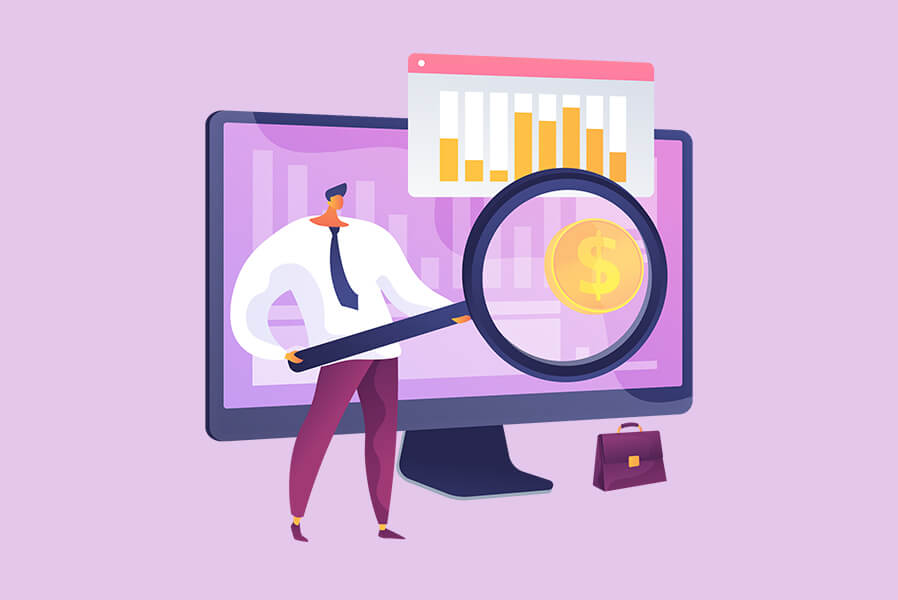
Assess the competitive environment and analyze the market trends. Data obtained through the study can help you determine the most favourable pricing for your mobile app. A market research-based method for determining an app's optimal price can be an effective method for deciding on the best price.
Figure out how to differentiate yourself from your competitors. Using your app to stand out from the crowd could be as simple as pricing it lower than the competition. Knowing market demand and thinking from the customer's perspective are both key factors in determining a product's price.
#3: What the user is willing to pay for your app?
Identify early on what sets your app apart from the competition in the market and what value customers expect from your product.
The likelihood of a product's success increases if it appears as a reasonable alternative or solution to frequently occurring problems faced by users. Building an application that people will enjoy using is essential. It's nice to have an app that helps to alleviate their issues or simplify their lives.
For example, consider a utility app that allows you to manage your budget. A user can download and use it for free but some of its features will require payment to be accessed. The user may only pay for the premium features if he or she feels that the extra cost is worthwhile.
#4 Competitive pricing analysis
Despite doing thorough market research, most business strategists fail to identify some key insights that are imperative for planning a money-making strategy.
Businesses cannot accept a lapse in competitive horizons due to inadequate competitor analysis that strains their ability to keep up with digitization. To compete in the industry, market-centric research and analysis are brilliant ideas to identify marketing loopholes. Analysing competitive pricing consists of completing a detailed analysis of your market and the pricing strategies of your competitors.
Understand how your competitors' pricing compares to the market as a whole, and you can use those weaknesses to test your prices and find an optimal price.
You could change your product messaging and pricing so that they reflect how much better your product is compared with your competitors'. For example, if competitors and you offer very similar products and services, but yours has more features that are relevant to your business, you could consider changing your price tag.
When assessing your mobile app pricing strategy, observe what your competitors are doing and their pricing policies.
#5 Try out different pricing models
Before you quote a price for an app, you need to determine what the market is willing to pay for the app. To find the optimal price for your app, test it at various price levels and track the market response.
Setting a price that is reasonable for your app should build a revenue stream and build customer loyalty. If you plan to provide in-app upgrades in the future, set a price that users can afford.
#6 Which platform: Android or iOS?
Where you launch your app also greatly influences your pricing strategy. Android and iOS offer different markets for targeting, as well as different payment options in-app.
Research indicates that iOS users are more willing and able to afford to pay for in-app features, while Android users may prefer free or one-time payment apps. You need to decide first which platform is appropriate for your app before deciding on a price strategy.
To make the right decision, keep an eye on your competitors. When there are free apps available in your market, choosing a paid model for the same set of features would be a colossal mistake. If your app has advanced features and higher functionality not found in other apps in the same category, the likelihood that users will be willing to pay more for your app is higher.
What are the four types of pricing strategies?
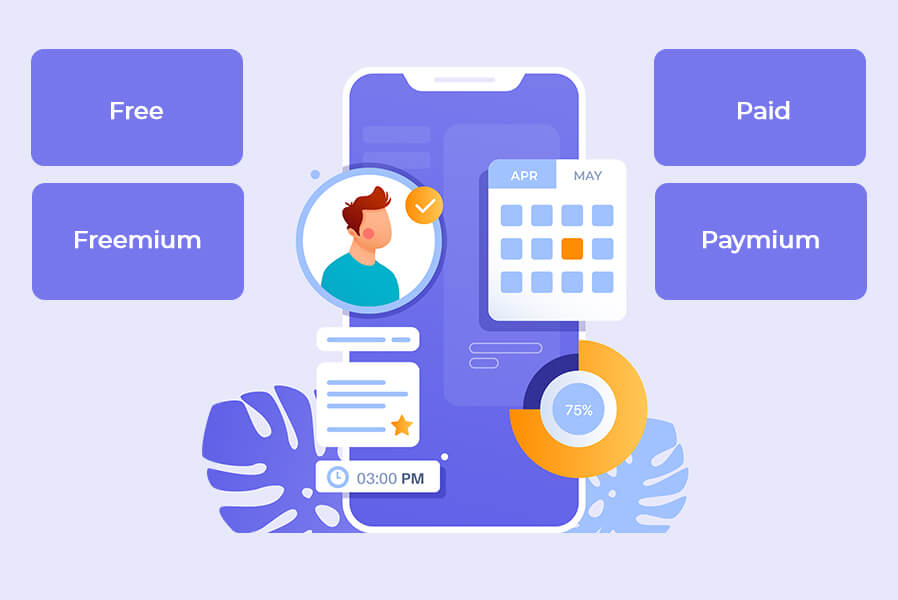
There are mainly four types of app pricing strategies, which are:
- Free
- Freemium
- Paid, and
- Paymium
Each has its advantages and disadvantages. What you choose depends on what is best for your app and your brand.
Free app pricing strategy
It is one of the best ways to increase your application's popularity. Although it may not be financially viable, it is one of the most effective ways to increase downloads. You can make money from your free app even if it's free. Depending on the service you provide and the type of company you are, the amount will vary. Businesses that provide a particular service or product usually develop their own free apps. It is simply an extension of the service they provide and acts as a means of engaging their customers.
Users can stay with you longer this way and are less likely to switch to a competitor. When you make your free service available to your customers, you build loyalty to keep them coming back. A good instance of this is the Dominos app. You can download this for free and get exclusive app offers. You can place your order from inside the app and skip the queue.
How do free apps make money?
If you’re creating an app that’s free to download, you can make money by offering services that will help you generate revenue. Rather than the app making money on its own, this will drive users to the brand's services. Provide users with coupons and special offers in the app, along with a link to your store within the app.
Another way to monetize your free app is by opting in for in-app advertising. With this strategy, advertisers rent advertising space on your app. When customers launch your app, they will see the advertisements.
Creating an app with ads as the revenue source is a simple and sure-fire way to quickly gain a lot of users. It is crucial, however, to maintain the number of users. A mobile app that depends solely on ads as its revenue source will have trouble maintaining profits if it cannot keep its users engaged.
Freemium app pricing strategy
An app that uses a no-fee pricing strategy can also generate a large user base similar to a no-fee app model. This can happen fast, depending on the app's popularity at launch.
However, the freemium model differs in how it provides its users with features and functionality. Although the app will continue to work flawlessly even if the user does not pay, at some point the user will need to pay to avail of greater benefits such as extra storage or features.
Paid app pricing strategy
Paid apps are those that users must pay for before using them. A paid app strategy is one of the least effective since it requires users to pay for access to services, in comparison to free and freemium options. It can still be effective, however, if the right conditions exist.
Generally, users must spend money to use paid apps. In exchange for a fee, users are given access to these apps. Due to this, the marketing team needs to work harder to convince users to pay for your app. Since the last few years, different types of paid apps have become increasingly popular. Particularly during the Covid lockdown, streaming services such as Hotstar, Netflix, and Prime Video have grown in popularity. While several apps may require only a one-time payment, video streaming apps, work on subscriptions. In contrast to apps that require payment prior to installation, these apps are free to download, which eliminates the risk of customers losing interest.
How do you make money from a paid app?
Paid apps succeed based on their content and marketing. The paid strategy is unlikely to work if your app doesn't have high-quality content that keeps users coming back.
For example, take a look at HealthifyMe. Although it provides services such as diet monitoring and nutrient analysis for free, it generates income through its premium services which users have to pay for to access. Premium members are given access to exclusive and innovative content to keep them engaged.
Marketing is the key to making your paid app successful. In doing so, new users will find the app and legacy users will remember why they love it so much.
Choosing between a one-time payment and a subscription model
Does your app require a one-time payment or a subscription model? This depends on the app content and how frequently you intend to release updates. The one-time payment option makes sense if you have a high-quality app, but do not anticipate frequent updates. In contrast, if you plan on regularly releasing new content and making updates that keep users coming back, a subscription plan may be the best approach.
Paymium pricing strategy
Paymium is a combination of freemium and paid app pricing strategies. You charge a one-time fee for your paymium app, similarly to a paid app. There can later be additional features added that will require the user to make additional payments in order to access them. It will work if you believe you've got a profitable app.
A low initial investment is often what attracts users. For instance, many apps charge less than $1 for the first download, but then charge to enable access to more features in the app. It is recommended that you use this model if your app's content increases its value. Additionally, to the initial cost, you must also provide a reason why the user should continue to pay. The user should feel that the reason is worth the money.
A compelling example of paymium pricing strategy can be seen in mobile games such as Angry Birds, Minecraft, Kingdom Rush Origins XD, and Capcom's Mega Man X. These apps employ a strategy where the user has to first pay for the game. As they progress through the game, they have to pay for further upgrades and additional features.
What pricing strategy should my business use?
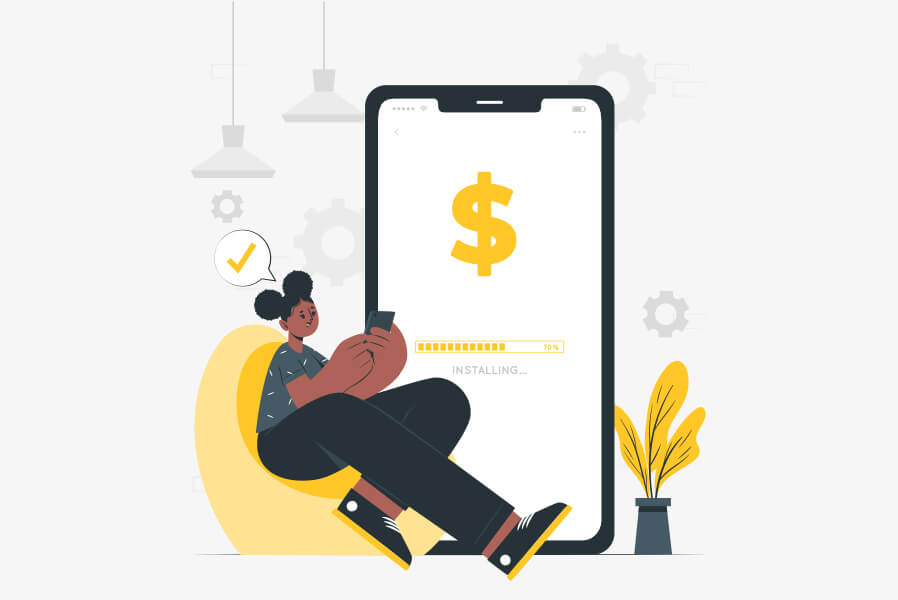
To be successful in business, you must get your pricing strategy right. If your prices are too high, you will be unable to get users to download your app; if your prices are too low, you will not be able to cover all the costs associated with building an app.
It can sometimes seem like a never-ending puzzle trying to determine how to price an application. A few of the factors that play a significant role in product pricing are:
- The purpose of your application and business goals
- The cost to build your app
- Target users and market demand
- App maintenance cost
- How your competitors’ price their products
- Whether it is an Android or iOS app
You need to carefully analyse various aspects of pricing your app and determine the best strategy that works for your brand before hitting the marketplace. Keep in mind, however, that your app's value should ALWAYS exceed its price.
FAQs
How do you choose the right pricing strategy?
⦁ Understand your target users' needs and what value you offer. ⦁ Evaluate your competitors' strategy. ⦁ Evaluate your development costs and keep break-even low. ⦁ Affordable pricing.
What is the most effective pricing strategy?
Among all pricing strategies, value pricing is probably the most effective. Customers evaluate your products or services by how significant, worthwhile, and high-quality they find them.
Request a Quote
Categories
Popular posts
Best Practices for Software Product Engineering Every CTO Should Implement
2023-14-18How to Build Your Own On-Demand Carpooling App Services?
2023-08-25How to Start an On-Demand Fuel Delivery Business: A Comprehensive Guide
2023-07-28Empowering Miners: How Fleet Management Apps are Transforming the Mining Industry?
2023-07-21A Complete Guide to Develop a Food Delivery App for Restaurants in 2023
2023-07-08Mobile Apps Transforming the Travel Industry: A Game-Changer in Travel Planning and Experience
2023-07-07
